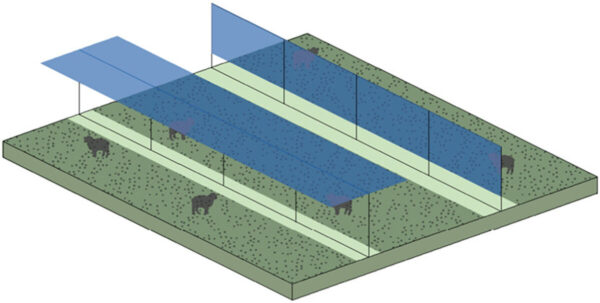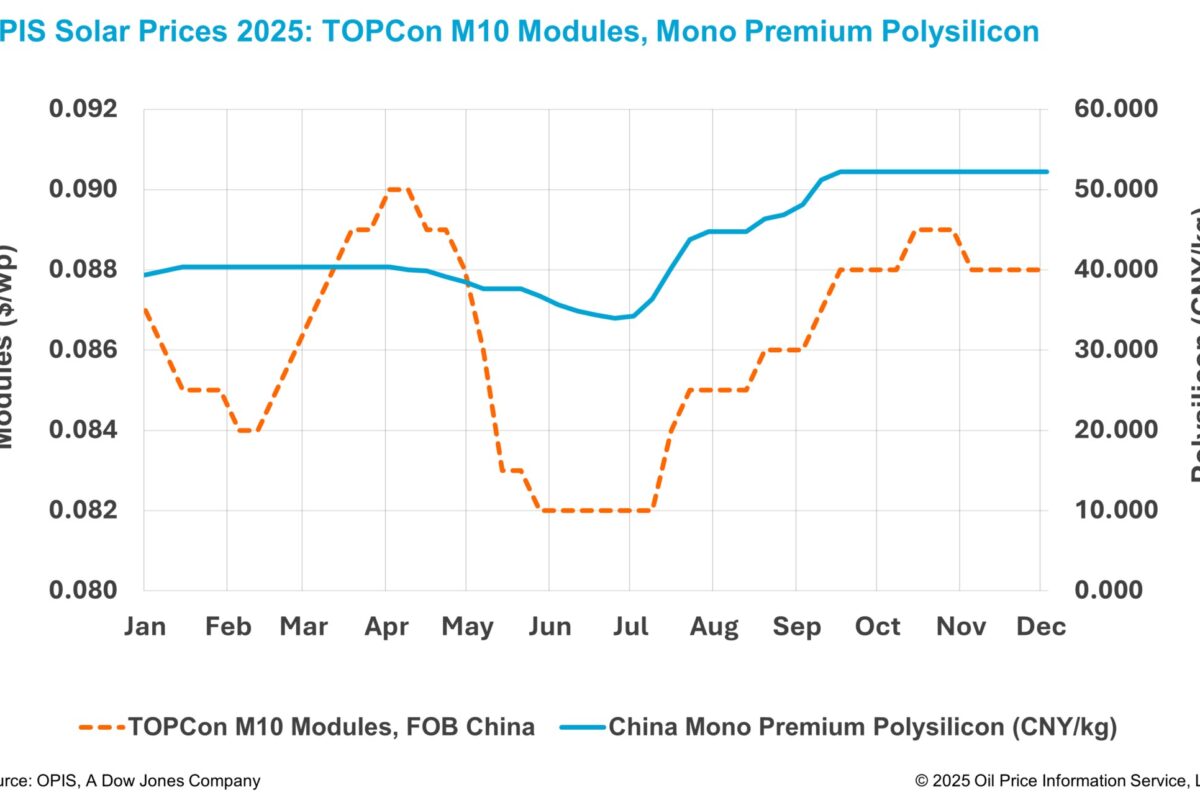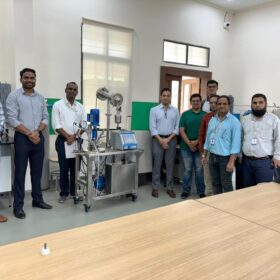From pv magazine Global
Researchers from the Netherlands’ Wageningen University & Research assessed the perceived landscape quality of people who live next to either an agrivoltaic (AV) system deployed with an overhead configuration and a vertical agrivoltaic array.
Their survey was conducted via a series of interviews held with people who live next to or pass by two agrivoltaic farms with the two different configurations located in the Dutch province of Gelderland.
“The link between landscape impacts and support for renewable energy projects highlights the importance of examining the social acceptance of agrivoltaics from a landscape quality perspective,” the researchers emphasized. “In this research, landscape quality (LQ) is considered from a subjective school of thought, examining individual experiences of two landscapes including the meanings ascribed by the landscape users.”
The overhead system that was considered in the survey is located in Wadenoijen, and it was constructed in March 2021 over 3.7 hectars of land. Before the installation of the AV system, the plot was used as a redcurrant farm, and the fruit is still being grown there under the panels.
The vertical AV, on the other hand, is located in Culemborg in a pasture area. It started operating in August 2022 over an area of 0.7 hectares, and aside from pasture, it also hosts a small field with herbs and plants, a beehive, as well as trees and shrubs.
The survey was conducted with a total of 62 respondents, 32 living close the vertical farm in Culemborg and 30 near the overhead system in Wadenoijen. It included 24 questions, all related to the use, experiential, and future values. “Use value refers to functional suitability and efficiency, experiential value relates to identity and meaning, and future value considers efficiency and sustainability over time,” the academics explained.
The use value was represented in the survey by questions regarding the factors of accessibility, multifunctionality, the involvement of farmers, environmental impacts, and recreation and community activities. The experiential value was represented, on the other hand, by factors of attractiveness, health & well-being, wildlife habitats, and visual appearance, while future value refers to stability/flexibility and cultural and landscape development.


Image: Wageningen University & Research, Energy Research & Social Science, CC BY 4.0 DEED
“The results reveal that respondents favored vertical interspace AV over overhead AV,” the scientists stated. “The use value increased in the case of vertical interspace AV (12%) but decreased in the case of overhead AV (- 11%). The experiential value was reduced in both cases (-11% for the interspace AV and -16 % for the overhead AV). The future value increased slightly for both AV systems (2%).”
In the case of the vertical farm, the experience of visual appearance was reduced by 3% after the plant construction, a minor change compared to the 24% in the overhead case. The overheard plant also reduced the perceived positive effect on wildlife by 60%, while the vertical AV changed it by 48%. Health & well-being quality experience dropped by 28% in the vertical case and 33% in the overhead plant.

Image: Wageningen University & Research, Energy Research & Social Science, CC BY 4.0 DEED
The results also showed that in the case of the vertical panels 90% of the residents believed that involving farmers in the energy transition is a good thing, while in the overhead the rate was 80%. In the case of overhead AV, the factor of environmental impacts was most pivotal in the decrease of the use value with a reduction of 147%, compared to negative 8% in the vertical case.
When asked to rank the most important factors to them, environmental impact was on top with 13%, followed by health and well-being with 12%, and wildlife habitats with 12% as well. Recreation and community activities, attractiveness, and accessibility got the lowest amount of answers, with 7%, 6%, and 5%, respectively.
“While agrivoltaics represent a potential solution for land allocation challenges of solar energy infrastructure, the experiential value of landscapes – as evidenced in this research – warrants more attention,” the academics concluded. “Although this study examined two particular types of AV in the Netherlands, the findings also provide directions for agrivoltaics developments elsewhere.”
The survey was presented in the paper, “Landscape user experiences of interspace and overhead agrivoltaics: A comparative analysis of two novel types of solar landscapes in the Netherlands,” which was recently published in Energy Research & Social Science.
This content is protected by copyright and may not be reused. If you want to cooperate with us and would like to reuse some of our content, please contact: editors@pv-magazine.com.








By submitting this form you agree to pv magazine using your data for the purposes of publishing your comment.
Your personal data will only be disclosed or otherwise transmitted to third parties for the purposes of spam filtering or if this is necessary for technical maintenance of the website. Any other transfer to third parties will not take place unless this is justified on the basis of applicable data protection regulations or if pv magazine is legally obliged to do so.
You may revoke this consent at any time with effect for the future, in which case your personal data will be deleted immediately. Otherwise, your data will be deleted if pv magazine has processed your request or the purpose of data storage is fulfilled.
Further information on data privacy can be found in our Data Protection Policy.